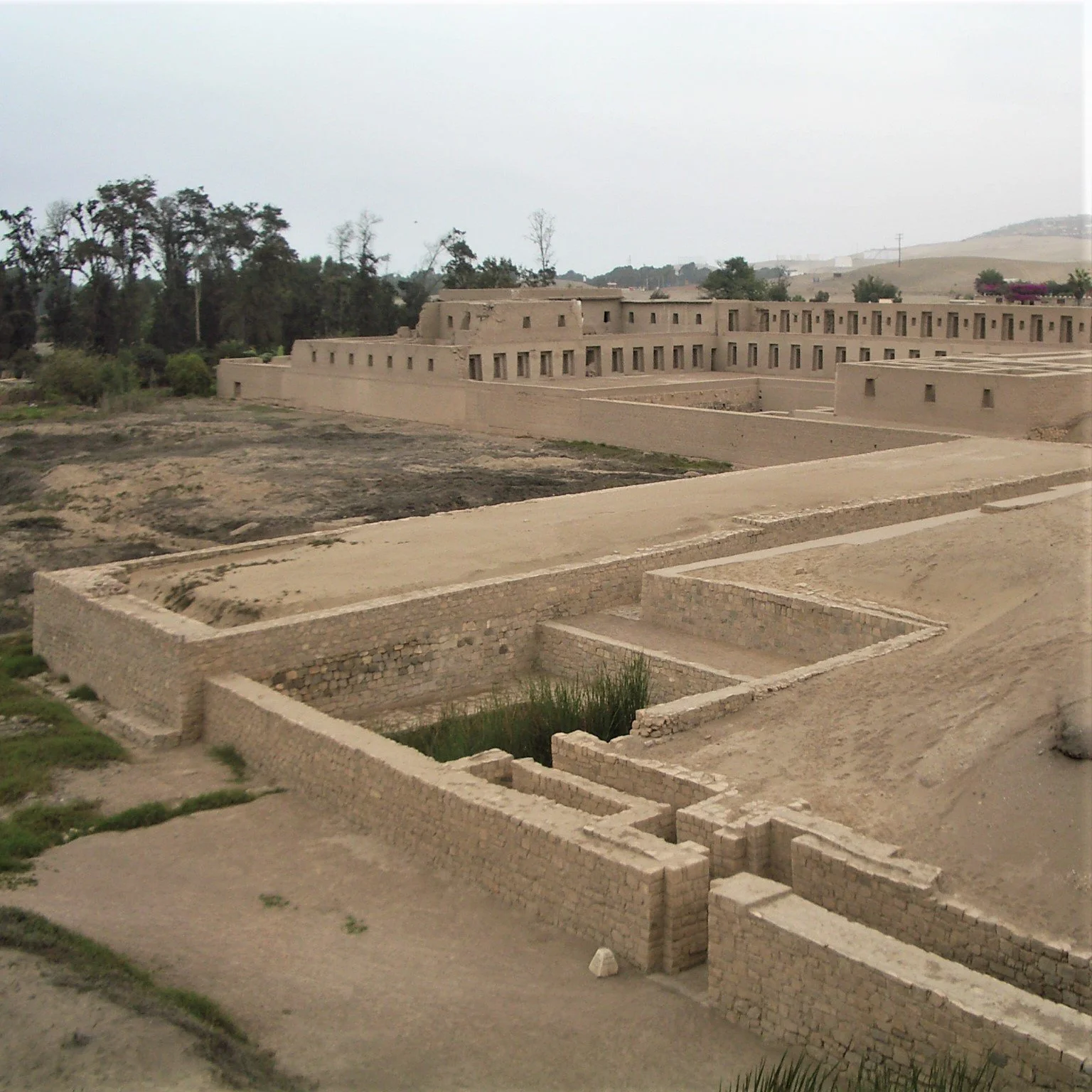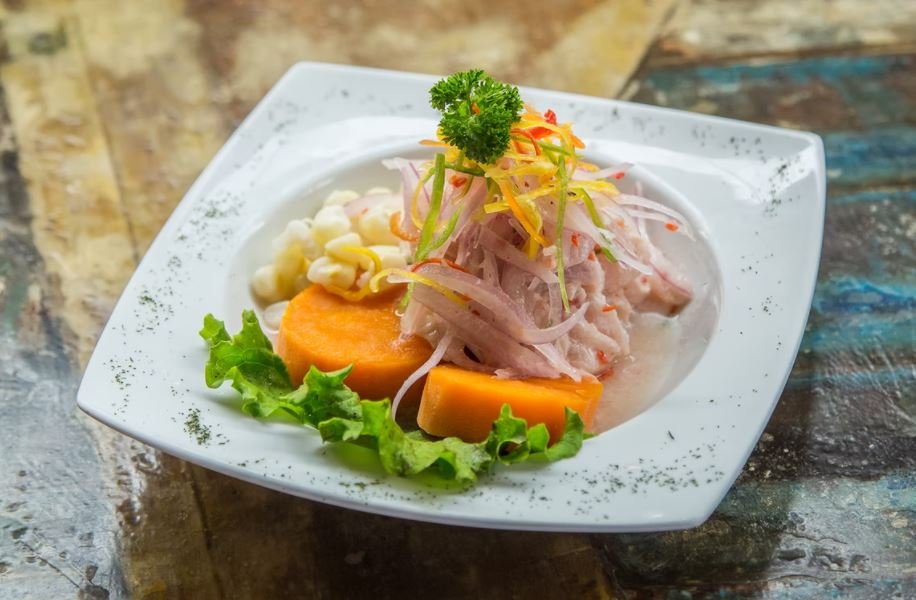How to Spend 48 Hours in Lima, Peru
The South American Country of Peru is steeped in history and culture. There are so many fantastic places to visit all over Peru, such as the Inca City of Cusco and Machu Picchu, the Nazca Lines and the Amazon Rainforest.
For many people, Lima is just a stop off on the way to the aforementioned sites, but Lima has so much more to offer visitors, with a colourful culture and world-class gastronomic cuisine. Whether you have a couple of days or a couple of weeks, the following guide will help you plan your visit. If you are short on time, I would recommend choosing a few of these options that suit your particular tastes.
The information here is correct at the time of writing this blog post, but please check current details before your visit. **This article has been updated for 2022**
Table of Contents
Visit the Plaza Mayor de Lima and the Historic Centre
Enjoy the Street Parades and Festivals
Relax in the Neighbourhood of Miraflores
Explore the Street Art of Barranco District
Discover Lima’s Contemporary Art Galleries
Go and See the Circuito Mágico del Agua
Visit the Plaza Mayor de Lima and the Historic Centre
Lima was founded in 1535, by the conquistador Francisco Pizarro, with the name of the City of Kings, and was the largest and most important city in South America during the Spanish regime. The best place to see this colonial past is at the Plaza Mayor de Lima, and surrounding historic streets. The historical importance of this area was recognised in 1988 when it was added to the list of UNESCO World Heritage Sites in Peru.
The Plaza Mayor de Lima is a beautiful square in the centre of Lima, and is also the largest city square in the Americas. The space is characterised by a series of colonial buildings with intricately carved wooden balconies, which gives the city centre a sense of originality. It is also surrounded by a number of landmark buildings including the Government Palace, Cathedral of Lima, Archbishop's Palace of Lima, the Municipal Palace, and the Palace of the Union.
A large number of streets converge on the Plaza de Armas, making it an important hub and a popular meeting point for locals and tourists alike. To the south of the Plaza Mayor de Lima is Jirón de la Unión, a famous street that is lined with all sorts of shops, including jewellery stores, bookstores, as well as cinemas. There are also a number of other bustling pedestrian streets around the Plaza de Armas, filled with small cafes and restaurants, perfect for a break to sit back and watch the world go by.
Photo by Kenneth Moore, Flikr
A particular highlight in this historic area is a visit to the catacombs at the Basílica y Convento de San Francisco de Lima, the second largest in the world after Paris. The Basílica y Convento de San Francisco de Lima is just a few streets from Plaza Mayor de Lima.
More than 25,000 people from privileged backgrounds were buried in these underground vaults, when Lima was capital of the Viceroyalty of Peru. Controversially, the larger bones have been arranged artistically in circular patterns from the bodies of the past. The site is interesting from both a historical and ethical viewpoint, but is not a trip for the faint-hearted.
Enjoy the Street Parades and Festivals
Lima hosts festivities throughout the year, and there is a good chance a visit to the Peruvian capital will coincide with one of these occasions. These festivals are full of colours and spectacle and often involve entertaining street parades.
The Plaza de Armas is a key location to see one of these festivals and street parades, but they extend across the city to other areas such as Miraflores.
Some of the key festivals in Lima include the following, although there are other festivals:
The Founding of Lima – This festival held around 15th January to celebrate the foundation of the city of Lima in 1535 by Spanish Conqueror Francisco Pizarro. The festival includes a number of cultural activities, street parades, fireworks, art exhibitions, and theatre and music events.
Carnival – This festival is held every weekend throughout February and involves water-related games and a parade through the streets of Miraflores and Barranco.
Fiesta de la Vendimia – Held in March, this festival takes place in the old Surco district and involves trade fairs, dances, beauty pageants and visits to wine cellars.
Easter Week – This festival involves visits to the churches within the city.
San Pedro y San Pablo – Held on 29th June, San Pedro celebrates local fisherman, with a procession in Chorrillos.
Fiestas Patrias – This festival is held on 29th July each year to celebrate Peru's independence from Spain in 1821. There are events held throughout the city including a military parade in the park of Campo de Marte, and the Te Deum religious ceremony at Lima Cathedral, as well as a number of street parades, art exhibitions, concerts and fairs.
Month of the Lord of Miracles – The Lord of Miracles is held in October, to act as an occasion of remembrance in respect to a devastating earthquake which took place in Lima and El Callao in the 17th century. This festival involves a procession with an effigy of the Lord of Miracles, with the city dressed in purple.
We visited Lima during Fiestas Patrias and saw some excellent street parades in the historic centre of Lima and a huge fireworks display in Miraflores.
Relax in the Neighbourhood of Miraflores
Photo by Jorge Segovia
Miraflores is a residential suburb of Lima, located alongside the Pacific Ocean. Miraflores has its own centre full of shops, cafes, nightclubs, fine dining restaurants and nightclubs. It also has a high number of good quality hotels, and it is where we stayed during our visit.
At the centre of Miraflores is Parque Central de Miraflores, located between Avenieda Larco and Avenieda Oscar Benavidas. This well kept park has an open air theatre with regular performances throughout the week. It was here that we watched the Fiestas Patrias fireworks.
At the end of Avenieda Larco is Parque Salazar and the Centro Comercial Larcomar Shopping Centre, one of the best places to go shopping in Lima. There are excellent views of the Pacific Ocean from here.
Being located alongside the coast, there are a number of activities, such as surfing, walking and cycling along the coastal path or simply relaxing on the beach. This is a great location to watch the sun set over the Pacific Ocean.
Miraflores also has an archaeological site to explore - Huaca Pucllana, a pre-Inca pyramid.
Explore the Street Art of Barranco District
Barranco is located to the south of Miraflores, and was developed as a seaside resort at the end of the 17th Century. Today, Lima’s arts and culture community is concentrated in Barranco and it is here where you will find galleries such as MATE and the Museo de Arte Contemporáneo de Lima, museums, popular restaurants and shops. However, it is the street art that makes it stand out and a great place to visit and explore.
The street art is everywhere, with incredible murals at every turn. These murals are constantly changing, sometimes painted over with new murals, adjusted or tagged.
The great thing about Barranco is that it is easy to walk around, which makes exploring the street art a very enjoyable activity.
Photos by Leo Gonzales, Flikr
Discover Lima’s Contemporary Art Galleries
Lima has a fast growing contemporary art community. There are a number of gallery spaces that are worth spending a few hours, including:
Lima’s Museum of Contemporary Art, known as MAC opened in 2013 in the city’s Barranco District. This gallery hosts exhibitions of modern and contemporary art from both local and foreign artists dating from 1950 onwards. Although it has a strong focus on mostly Latin American and European artists and covers optical art, abstract expressionism, constructivism, conceptual art, geometric art, as well as works influenced by surrealism and pop art. The Museum of Contemporary Art can be found at Av. Grau 1511, Barranco, Lima 15063.
The Museo Mario Testino, known as MATE, was founded in 2012 with the aim of promoting Peruvian artists and culture to a global audience, while displaying the best of international contemporary art and photography to audiences in Lima. MATE is situated in the heart of the Barranco district, within a restored 19th townhouse. MATE can be found at Av. Pedro de Osma 409, Barranco, Lima 15063.
The Lima Art Museum, known as MALI, holds over 3,000 years of Peruvian art, ranging from pre-Columbian textiles and ceramics, pictures, paintings and furniture to Colonial and Republican times. The museum is large enough to spend up to a day here. MALI can be found at Parque de la Exposición, Av. 9 de Diciembre 125, Cercado de Lima.
Go and See the Circuito Mágico del Agua
Photo by Miguel Vera León, Flikr
The Circuito Mágico del Agua is a water circuit within Reserve Park, to the side of the national stadium. There are 13 cybernetic fountains, with a mixture of music, water, sound and laser lights that combine to create an incredible show.
Visit Lima’s Archaeological Sites
Lima has a number of fascinating archaeological sites, many of which pre-date the Inca period. The key sites include:
Pachacámac – This site is located about 25 miles southeast of Lima. It comprises a pre-Inca complex of 17 pyramids, used by the Wari people to honour their creator god, and was expanded upon by the Incas.
Huaca Huallamarca – This site comprises a mud-brick pyramid dating back to 800 BC, located in the San Isidro District.
Huaca Pucllana – This site is located in the Miraflores district, and comprises an adobe pyramid that was once an important site for the local people, between 200 AD and 700 AD. There is an on-site restaurant with a patio area, which has great views of the site, and the modern skyline immediately behind it.
Delight in the Wonderful Food of Lima
Lima has seen growth in food tourism over recent years, with people drawn to the flavours and food unique to this area. Lima is now seen as one of the gastronomic capitals of the world. As a result of this growth in food tourists, there are now an abundance of food tours, cookery classes, and high-end restaurants to choose from.
If you only have a short time in Lima, I would recommend trying the Ceviche, which is a national Peruvian dish, and often served as an appetizer. This seafood dish is typically made from fresh raw fish or shrimp, that is marinated in fresh citrus juices, such as lemon and lime. Other suggestions include causa limeña (a chicken layered potato dish), ají de gallina (a creamy chicken stew) or lomo saltado (a Peruvian beef stir-fry). Peru also has a rich vegetarian menu choice, with a variety of cuisine options based around ingredients local to the area including corn, chocho, lima bean, quinoa, and potatoes.
I hope you have found this post about Lima useful. If you have visited Lima and any of places I mention, I would love to hear your thoughts or if you feel something is missing from this post, please email me and let me know at [email protected].




















